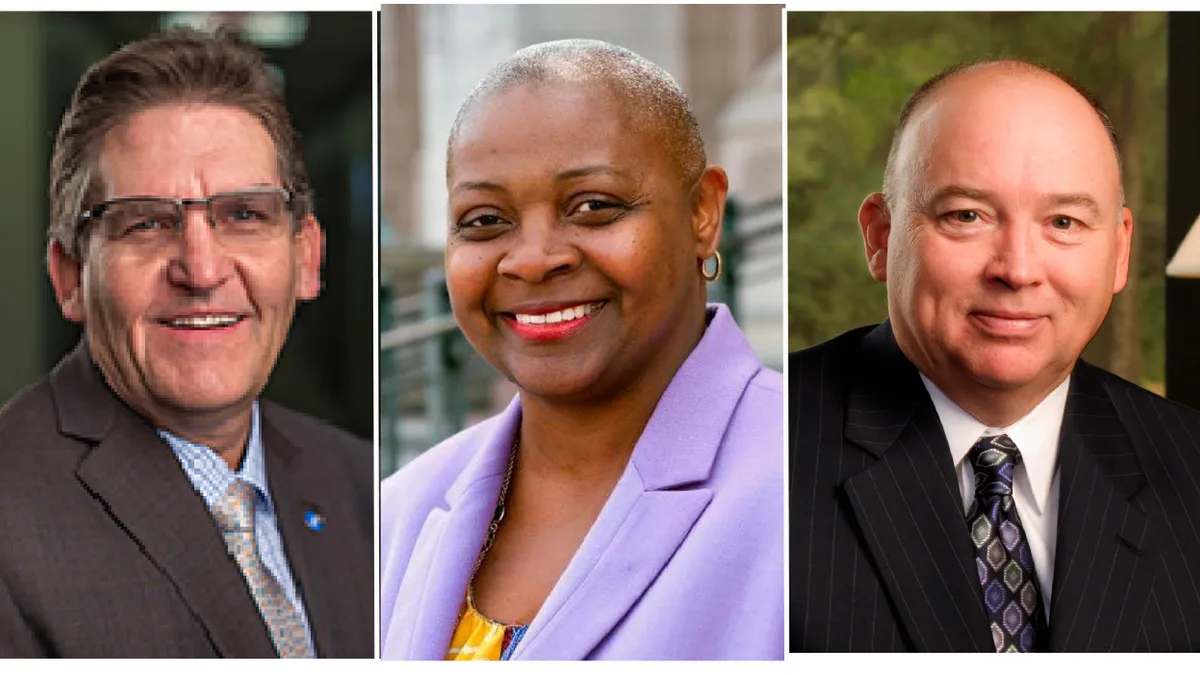Enrollment and finances are top concerns for leaders across higher education, but the crunch of both is particularly felt by community college presidents, who are seeing their once-reliable population of working adults and nontraditional students recruited away to four-year institutions. According to Inside Higher Ed’s 2018 Survey of Community College Presidents, fewer presidents are reporting down enrollments than last year, but leaders are increasingly concerned about the future of the community college presidency, citing again a limited pool from which to recruit the next generation of leaders, and an even more limited development program to help stack the pipeline. Only 28% of community college leaders are impressed with the talent pool, and 47% say there are no clear pathways to the presidency.
Still, an expansion of free community college programs nationwide and a re-emphasis on workforce development and vocational education from the White House have given a boost to the sector in recent years — even if President Donald Trump doesn’t know what a community college is or does. And amid this small boon for the sector, there are several leaders who stand out among the rest for their efforts to maximize those workforce development goals, promote equity and build admirable workplace cultures. Below, we highlight three leaders we think are worth paying attention to in 2018 — and beyond.
Jimmie Bruce, president, Eastern Gateway Community College
Three years ago, Jimmie Bruce launched a free community college program for 70 students that serves over 9,000. Partnering with local and national unions, he expanded an existing last-dollar scholarship program at the Ohio institution to help students take advantage of tuition reimbursement plans offered by their employers and increase the number of workers in Ohio, Pennsylvania and West Virginia who were going back to school to re-skill and earn formal certifications.
Not only that, but the college attracts a high number of out-of-state students to its two campuses and online programs — roughly 5,000 of the students hail from Ohio, and another 6,000 come from other places in the country, with heavy concentrations on the East and West coasts — something unheard of for community colleges, which often draw most of their populations from their local service districts.
Sheila Edwards Lange, president Seattle Central College
Sheila Edwards Lange has made it her mission to increase representation of girls and students of color in STEM, and she is known in Seattle and across Washington for her leadership in not only this area, but in education overall.
Edwards Lange considers herself an activist as much as an educator, and counts among her top institutional priorities eliminating institutional racism and increasing equity and diversity for the campus, building a shared sense of community on and off campus as equally important as the more commonly held financial stability and increasing enrollment and retention at the college. Education is a pathway for everyone to get jobs and access to a better life, she has said, and her role as the gatekeeper kicking down the door to ensure everyone has equitable access to the full educational experience makes her something like a civil rights activist.
Stephen C. Head, chancellor, Lone Star College System
Stephen C. Head has built a culture as president of Lone Star College in Texas that is so revered in higher education that system presidents literally have their pick of any number of highly credentialed, qualified individuals when they’re looking to hire for new faculty and administrative positions. “It’s an amazing place to work,” said CyFair Campus President Seelpa Keshvala during a session at the American Association of Community Colleges Annual Meeting. “The weather, the pay, the people,” she said are all reasons top faculty and administrators from all over the country vie for jobs at the community college system.
There’s also a heavy culture of collaboration, one in which all of the system presidents work “better together,” and other campus staff, including “the person that cuts the grass” feel they all play a part in student success — something presidents also attribute to the tone established by their chancellor.








